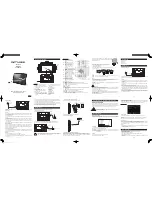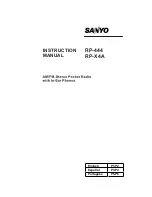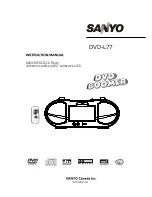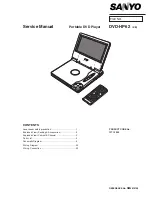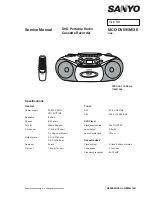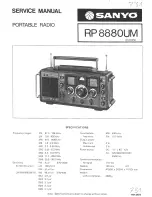
3 - ENG
rISK OF ELEcTrOcUTION AND FIrE
WHAT cAN HAppEN
HOW TO prEVENT IT
• Back feeding electricity through a
building’s electrical system to the out-
side utility feed lines could endanger
repair persons attempting to restore
service.
• Never backfeed electricity through
a structure's electrical system.
• Attempting to connect to the incoming
utility service could result in electrocu-
tion.
• Restoration of electrical service while
the generator is connected to the
incoming utility could result in a fire
or serious damage if a double throw
transfer switch is not installed.
• Failure to use a double throw transfer
switch when connecting to a struc-
ture's electrical system can damage
appliances and WILL VOID the manu-
facturer's warranty.
• To connect to a structure's electri
-
cal system in a safe manner, always
have a double-throw transfer switch
installed by a qualified electrician
and in compliance with local ordi-
nances. (When installing a double-
throw transfer switch, a minimum of
10 gauge wiring must be used.)
• Water can conduct electricity! Water
which comes in contact with electri-
cally charged components can trans-
mit electricity to the frame and other
surfaces, resulting in electrical shock
to anyone contacting them.
• Operate generator in a clean, dry,
well ventilated area. Make sure
hands are dry before touching unit.
• Contact with worn or damaged exten
-
sion cords could result in electrocu-
tion.
• Inspect extension cords before
use and replace with new cord if
required.
• Use of undersize extension cord(s)
could result in overheating of the wires
or attached items, resulting in fire.
• Use proper size (wire gauge) exten
-
sion cord(s) for application; see
Use of Extension cords
under
Assembly
.
• Use of ungrounded extension cord(s)
could prevent operation of cir-
cuit breakers and result in electrical
shock.
• Always use an extension cord(s)
having a grounding wire with an
appropriate grounding plug. DO
NOT use an ungrounded plug.
• Accidental leakage of electrical current
could charge conductive surfaces in
contact with the generator.
• Place generator on low conductivity
surface such as a concrete slab.
ALWAYS operate generator a mini-
mum of 6' (1.8 m) from any conduc-
tive surface.
• Exceeding the load capacity of the
generator by attaching too many
items, or items with very high load rat-
ings to it could result in overheating of
some items or their attachment wiring
resulting in fire or electrical shock.
• See
Operating Heavy Loads
under
Operation
. Make sure that the
summation of electrical loads for all
attachments does not exceed the
load rating of the generator.
Содержание PCG2200
Страница 10: ...10 ENG Z BB W AA X Z BB W Y X 3a PCG4000 3b PCG6500 Y AA...
Страница 43: ...43 FR Z BB AA X Z BB W Y X 3a PCG4000 3b PCG6500 Y AA W...
Страница 80: ...80 SP Z BB W AA X Z BB Y X 3a PCG4000 3b PCG6500 Y AA W...
Страница 110: ...Notes remarques notas...
Страница 111: ...Notes remarques notas...






















